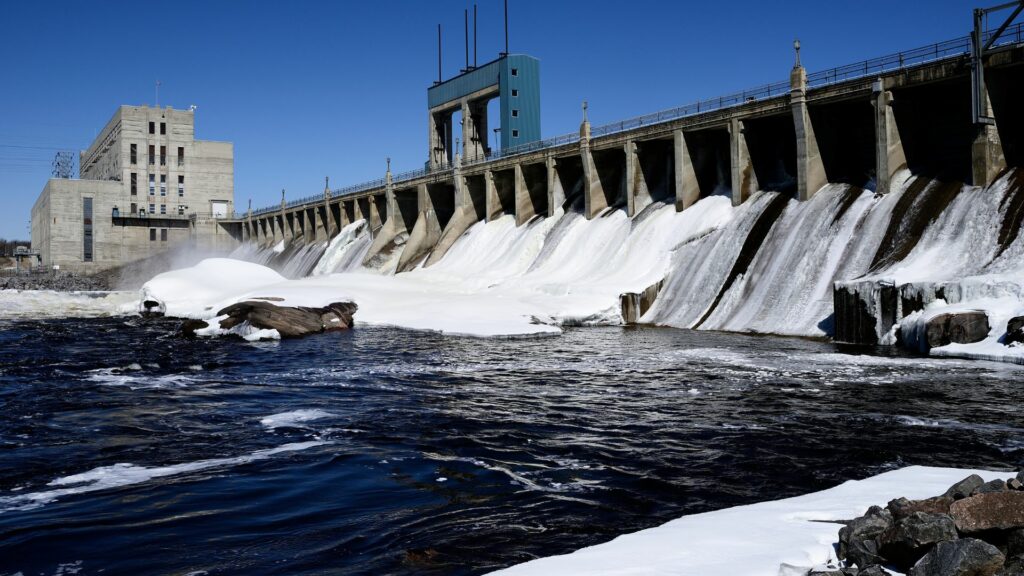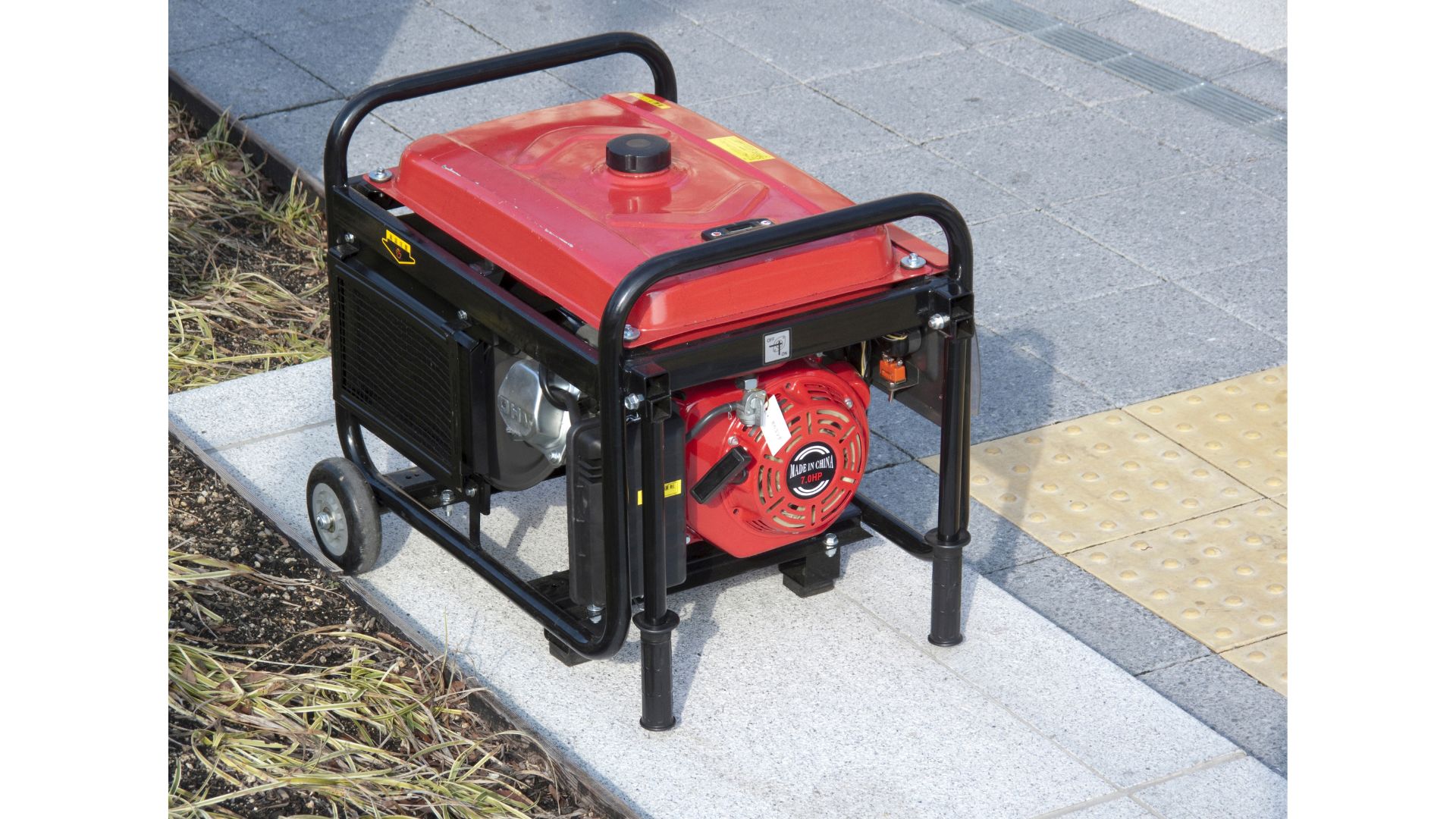Fossil fuels are not only expensive but also harmful to the environment, which is why the notion of a water-powered generator is so appealing. But do these generators work? Do they even exist? This guide will tell you.
Is There A Generator That Runs On Water?
For the most part, a generator that uses water instead of conventional fuel doesn’t exist. People who power their equipment with water indirectly use that water to make electricity.
For instance, they use water to run turbines that produce electricity. They are not drawing power directly from the water or splitting the water to make hydrogen and oxygen that fuel their generator. Even if they could split the water to derive hydrogen, the process would use too much energy to be viable.
Therefore, for the moment, you can confidently conclude that generators that run on water don’t exist. And if they do, those generators are prototypes you cannot find on the market because their viability and efficiency are questionable.
How does Generator work On Water?
Using water as fuel is tricky. Some people will tell you they created systems that use water instead of gasoline. But their claims are questionable. Consider the following:
1). How Generators Work
Generators use electromagnetic induction to produce electricity. They obtain mechanical energy from external fuel sources. They convert that energy into electricity, which they transmit to the load via conductors. The average generator consists of an engine, alternator, fuel system, battery charger, control panel, and voltage regulator, to mention but a few.
2). Understanding Hydro Electric Energy
The easiest way to make energy from water is to use turbines. While hydroelectricity sounds like a modern invention, the Romans started using the concept thousands of years ago. At the time, the objective was to grind grain by using flowing water to turn wheels.
Today, organizations use flowing rivers to make electricity by turning turbines. The average hydroelectric system involves the following:

- You dam a river to create a large reservoir of water.
- You create tunnels that channel water out of the artificial lake.
- The flowing water turns the turbines.
- The turbines are connected to generators. The turbines create electricity in the generators by turning.
- The amount of flowing water controls the volume of electricity. You can raise the energy produced by increasing the flowing water. You reduce the water flow when you need less energy.
- According to National Geographic, dams use spillways to prevent flooding. The spillway allows the water to bypass the tunnels and turbines.
- It is common practice to place hydroelectric systems on large rivers with fast-flowing water. Energy companies will also target waterfalls because the crashing water from a waterfall produces a lot of energy.
- Hydroelectricity is popular because it provides a renewable energy source. First of all, it will never run out. Secondly, it doesn’t harm the environment, not directly. The only significant side effect is the impact the dams have on fish. Dams have also been known to produce flooding.
3). How You Can Use Hydroelectric Power?
Laypeople don’t expect hydroelectric power to apply to small communities or households. They think that hydroelectric generators can only work on a large scale. You can’t use this concept to run your house.
But they are wrong. Any individual with flowing water running through their property can create a hydroelectric system. These micro hydropower generators are no different from large-scale hydroelectric dams in the sense that they also use turbines, pumps, and generators to make electricity.
When people mention water-powered generators, they are talking about micro hydropower generators.
4). What About The Water Fuel Cell?
Brendan J. Darrer wrote a paper exploring the efficacy of the water fuel cell and the viability of an HHO electric generator. He mentioned Stanley Meyer, an innovative American that developed a method of splitting water into hydrogen and oxygen gas. The goal was to make an engine that relied on this so-called HHO gas, air, water droplets, and exhaust gas.
While Stanley died before refining his invention, many innovators have pursued this concept over the years, including a trio of engineers from the UK who made an electrical generator that ran on water. They tested the 5.5-kilowatt generator with a four-kilowatt load.
Brendan’s paper includes details of the generator’s workings. But he doesn’t seem entirely convinced by their claims.
5). What About Osmosis?
The notion of generating energy via osmosis is not new. The concept typically involves the following:
- Take a tub and divide it with a semi-permeable membrane.
- Place saltwater on one side.
- Add fresh water to the other side.
- The freshwater molecules will pass through the semi-permeable membrane to the saltwater side, diluting it in the process.
- The saltwater side can move a turbine as it rises.
If osmosis can move turbines, why haven’t you heard of it? This process doesn’t have any practical use because it generates very little energy. However, Popular Science wrote an article in 2016 exploring a new osmosis power generator emerging from the combined efforts of US and Swiss researchers. This is what set the osmosis generator apart:
- The membrane was three atoms thick.
- One side had a higher concentration of seawater ions.
- The membrane had one opening that only permitted positive ions to pass.
- An electrode ran between the two sides.
- A current was produced when the positive ions transitioned across the membrane.
- This generator can produce one megawatt of electricity by using a membrane with a thickness of one square meter.
- Larger membranes with more openings can produce more energy.
- One megawatt can run 750 homes.
- These osmosis generators are better than solar and wind energy because they can make energy continuously regardless of the time of day or night.
6). Can A Generator Run On Water?
According to Technology Sage, 26-year-old Emeka Nelson created a generator that runs on water. Emeka’s achievement made headlines because he was not a certified engineer and had no university education.
Emeka took an interest in generators when generator fumes killed his friend. It took Emeka 16 years to make his dream a reality. The device produces roughly 1000 watts (220 – 240V). A liter of water will keep the generator running for six hours.
The generator is environmentally friendly because it has zero emissions. Whether or not Emeka’s invention actually runs on water is questionable. No effort has been made to explore his discovery on a large scale.
Naira Metrics reported on a story in 2019 in which Buserve Limited in Nigeria expressed an interest in joining forces with a German company to launch water-powered generators capable of generating 500KVA or more.
The generators would rely on a method that turns water into hydrogen gas using thermoplasma. The process wouldn’t involve any fossil fuel components despite producing power at a fraction (ten percent) of the cost of diesel.
However, as you can see, these generators are not using water as fuel. In other words, you don’t get electricity by pouring water into a tank. Generators that make energy directly from water don’t exist.
You can create technologies that derive hydrogen from water, but it would take more energy to execute that task than you would get from the generator.
How To Build A Generator That Runs On Water?
Right now, the only generator you can build is a micro hydropower system:
- Do you have all the tools you need? It isn’t enough to buy an alternator, regulator, wires, and turbines. You also need a water source that flows through your property, not to mention the resources to build channels and pipelines to guide the water accordingly.
- Companies will sell you kits that include turbines and generators. They can recommend turbines and generators after considering your situation.
- You need an inverter that turns the low-voltage DC into AC.
- You can run your hydropower system independently or connect it to a grid.
- You can store the power your system generates in batteries. Use those batteries in seasons when the water flow drops.
How Much Power Can These Generators Generate?
According to the US Department of Energy, you can get 100 kilowatts out of your micro hydropower system. But you don’t need that much. You can create a cheaper, smaller hydropower system that delivers roughly 10 kilowatts, more than enough to run your home.
Cost To Build Generators That Run On Water
You should expect to spend $20,000, depending on factors like the amount of labor you need, terrain, equipment, distribution, etc.

